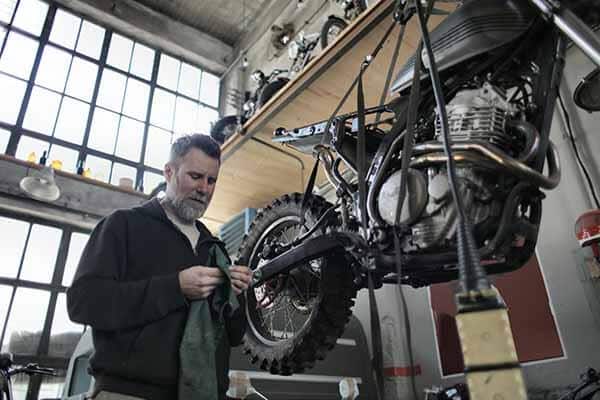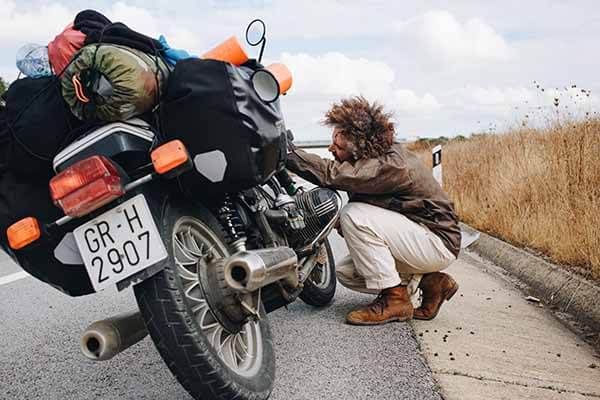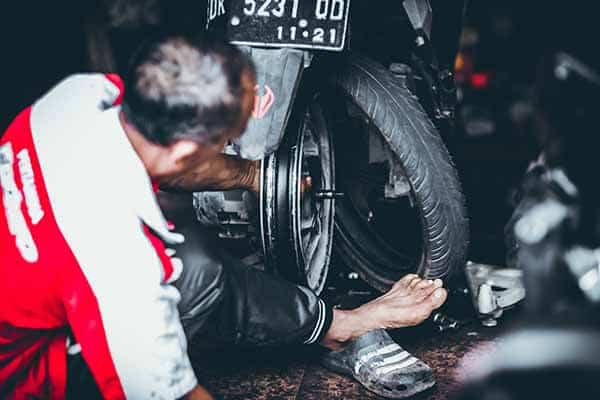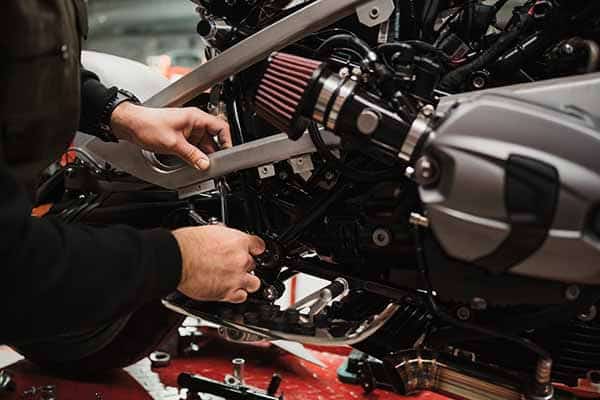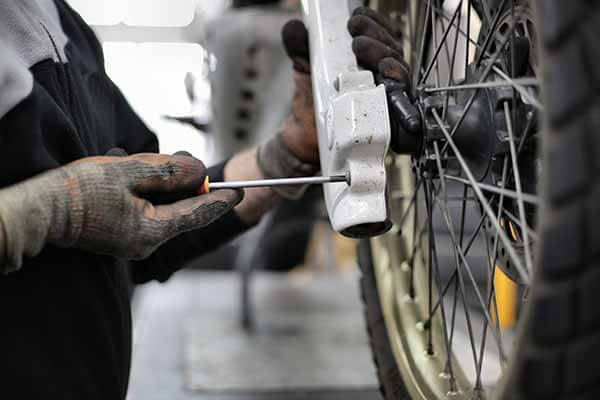When the days start getting longer and the landscape begins to change from white to green, motorcyclists start dusting off their bikes ready for the summer months. Before you head out onto the road this spring, it’s important to give the bike the once over and make sure it’s all in working order. Maintenance helps ensure that your motorcycle is safe on the road and keeps. It performs at optimal levels.
Basic Motorcycle Maintenance Checklist – 7 Tips For Newbies
There are a few things that you should be checking before you head out for the new season, including:
1. Battery
First up is the battery. You want to be sure that it’s ready to go and not going to give up on you half an hour down the road. If you haven’t been using your bike, it’s likely that you will have had the battery on a maintenance charger, in which case it should be charged and ready to go.
To be on the safe side, you may want to check out the voltage with your multimeter. You should be getting a reading of at least 12.5 V DC. There are also a couple of other things to check out. Firstly, the date of manufacture. If your battery is getting up towards five years, it’s worthwhile being proactive and switching it to avoid any roadside dramas.
Try the kickstart to make sure the engine turns over and there’s no difficulty getting it going. Then give the terminals a clean coat in dielectric grease to prevent any corrosion. Part of the battery check includes checking your fuses and storing a couple of spares.
2. Tires and wheels
These are pretty important as they are what keep you on the road. Give them the once over and check for any obvious signs of wear. Some tires have wear meters which makes the task easy, if the meter is flush with the tire surface, it’s time to replace the tire. You should also check the tires for cracks, dry rot, and hardening from oxidation. Check that the tires are inflated to the correct pressure.
To check the wheel bearings you need to get the wheel off the ground. A quick basic check involves holding the wheel on both sides and giving it a shake to see if there is excessive play (movement). Then give the wheel a spin to make sure it is running freely without feeling crunchy.
Related: 12 Motorcycle Safety Tips Every Rider Should Know
3. Final drive
While rotating the back wheel, take a look at the chain. Make sure it is moving freely as it should. Keep an eye out for seized links or excessive chain or sprocket wear, if this is the case it may be time to replace it. The alignment and tension should be checked with the proper tools, with the correct tension and wear specifications are available in the owner’s manual for your bike. Using a brush and solvent, clean your chain and then lubricate it so it’s ready to go.
If your bike operates with a drive belt, you should check for cracking, stray cords, and wear. A belt that is shiny or glazed is due for a replacement. Check the belt tension against the specifications in the owner’s manual.
4. Gasoline
Gasoline gets stale if left for long periods, so if it’s the start of a new season on the bike, it pays to start the year with a fresh tank of gas. This helps maintain your motorcycle performance. Try to start with a tank of new gasoline rather than mixing old with new. Siphon the old gas out with a pump.
5. Oil and Water
Every second year, it’s a good idea to drain the coolant and give the system a flush out with cold water. This helps to prevent corrosion in the radiator. Some people swear by replacing the radiator cap at the same time.
The service schedule for oil and filter changes is in your service manual. Roughly, it’s around every 5,000 miles for oil and 25,000 for a filter. Although some argue given the relatively low cost of a filter, it’s worth changing the filter each oil change as well.
6. Brakes and Brake Fluid
Check that your brakes are working properly before you head out on the road. Each brake pad should be checked for wear. Also, check that the wear is even. If your bikes have been sitting for a while there may be some signs of rust. This is completely normal and a quick clean with some brake cleaner will take care of it.
The brake cables should be checked for wear and tear. They have a road life of fewer than ten years, which is worth keeping in mind. New cables can improve the bike’s feel and control markedly if yours are getting near the end of their lifespan.
Make sure the shifter and the brake pedal are tight and positioned where you want them. Finally, brake fluid may have leaked over the winter months, so check that the levels are correct.
7. Controls
Next up, check your controls. Ensure that the throttle and clutch are smooth using cable lube. You want to make sure there is a tiny bit of slack in the throttle cable before it kicks in and that it returns to the idle position when released. If the cables to either are looking worn, it’s probably time to replace them.
Now is also a good time to sit on the bike and check that the mirrors are all still tightly attached and positioned where you want them. Check all the critical fasteners at the same time. This includes handlebars, triple clamps, axle bolts and adjusters, and motor mounts.
As you prepare for your first ride of the season, remember to give the motorcycle time to warm up. Turn it on and let it idle for five minutes before you head out. Also, remember the tires are likely to be cold and feel slick, so go easy to give them time to warm up and to give yourself time to defamiliarize yourself with the machine.
About the author: Michael Parrotte was the Vice President of AGV Helmets America, and a consultant for KBC Helmets, Vemar Helmets, Suomy Helmets, Marushin Helmets, KYT Helmets, Sparx Helmets. In addition, he is the founder and owner of AGV Sports Group.
MS/L

